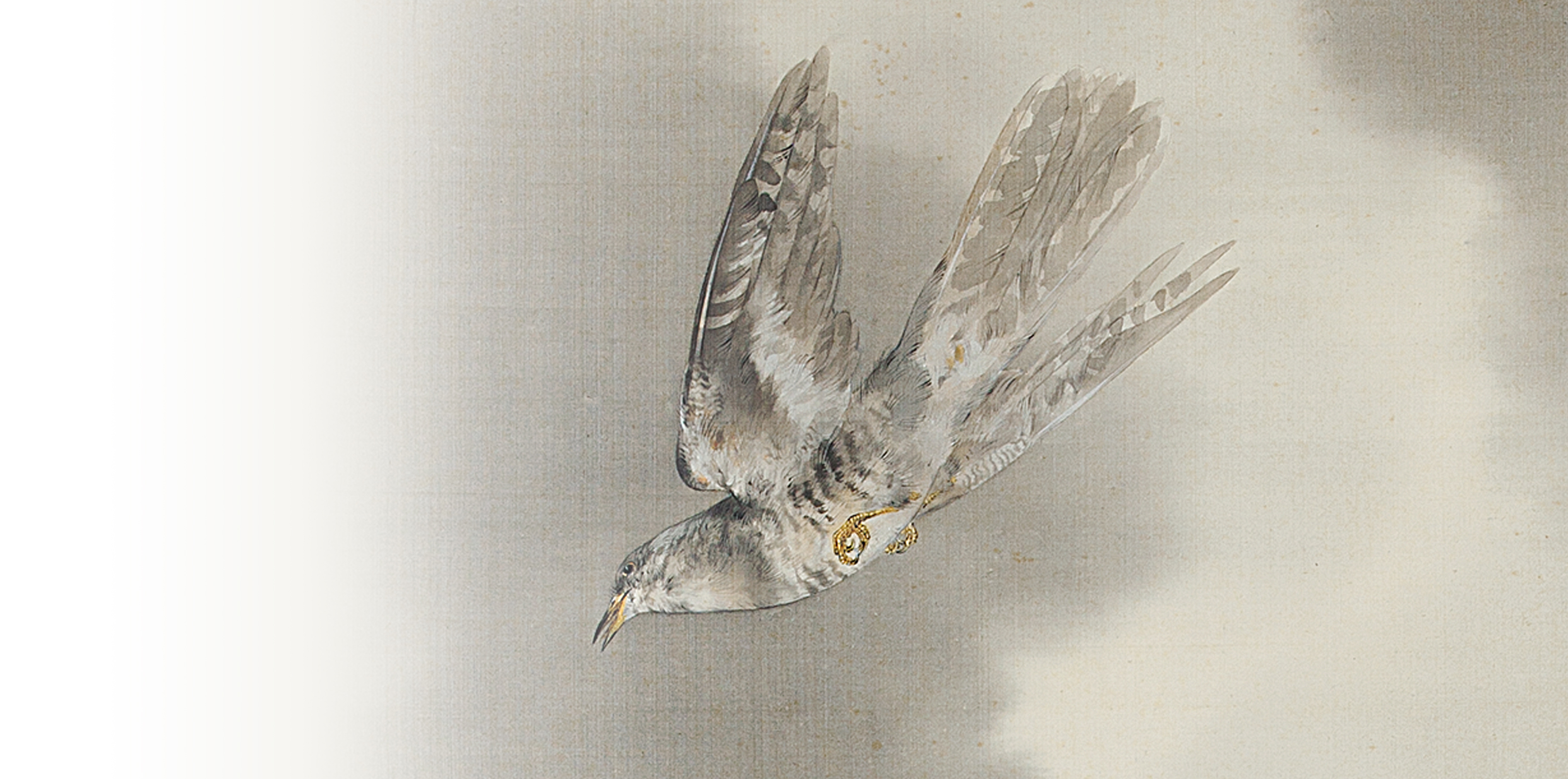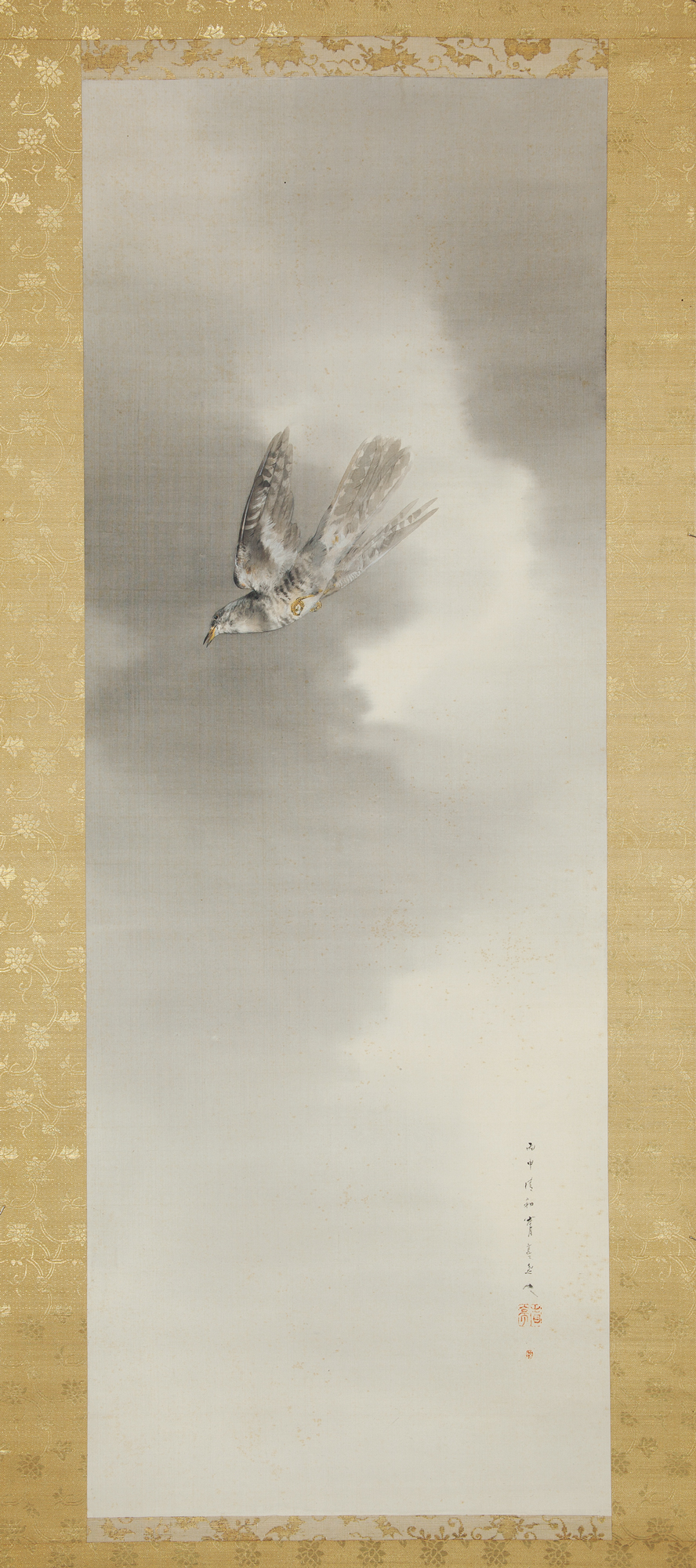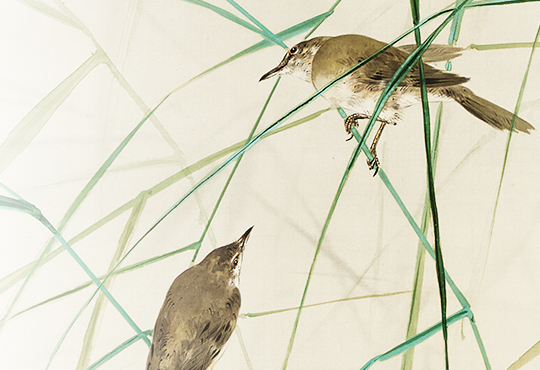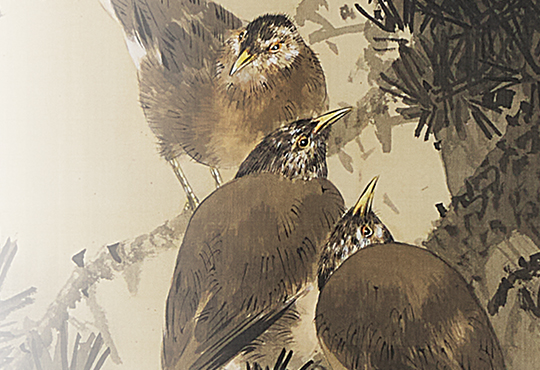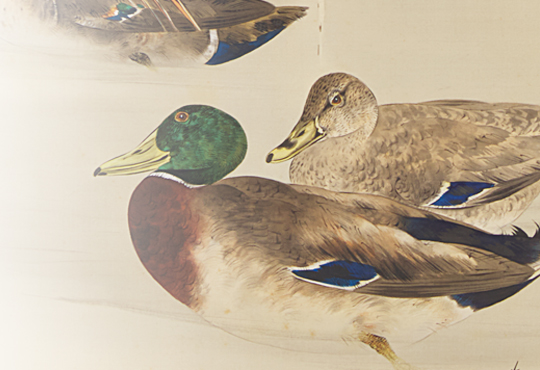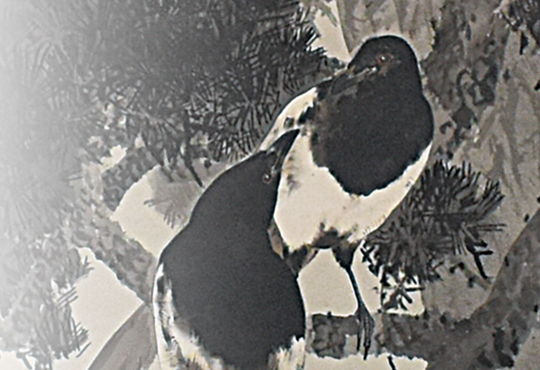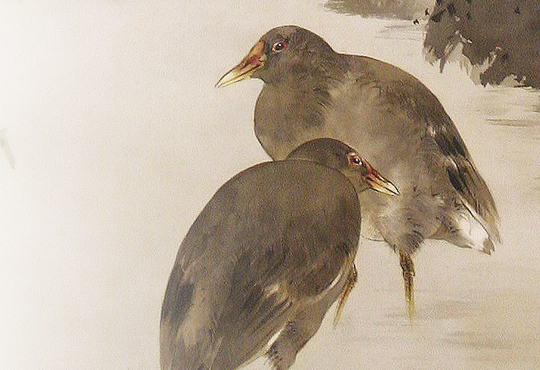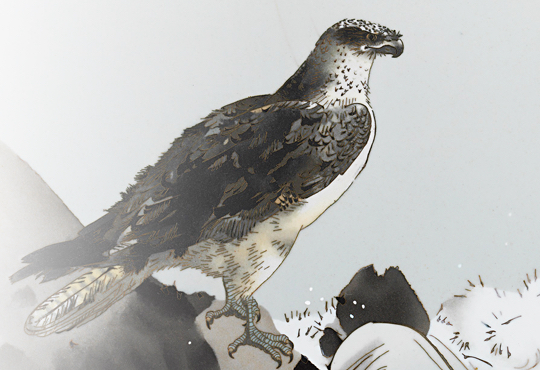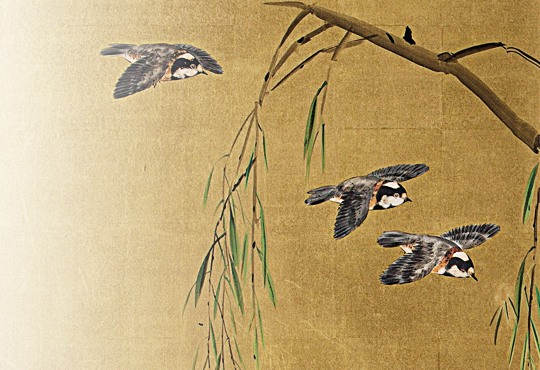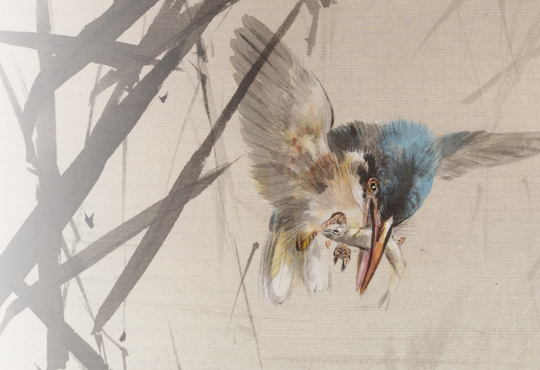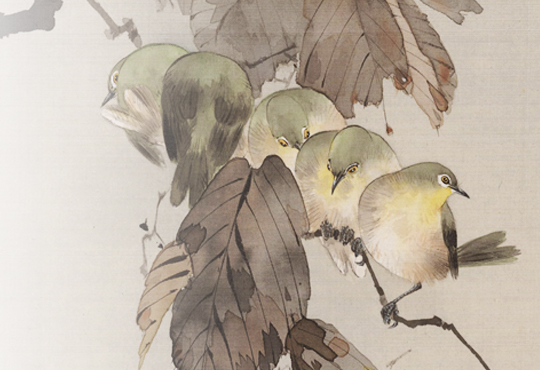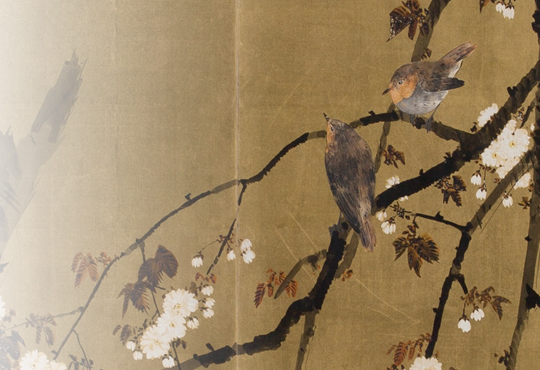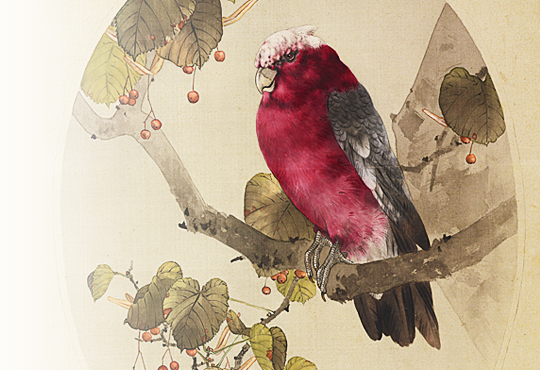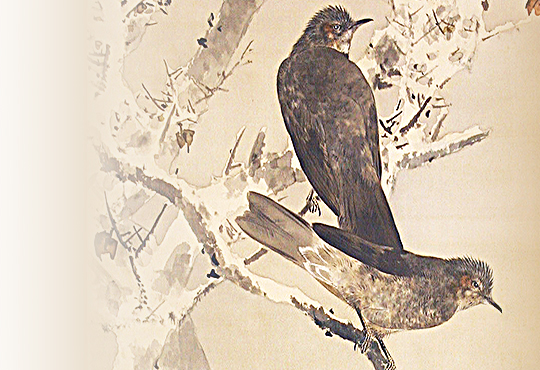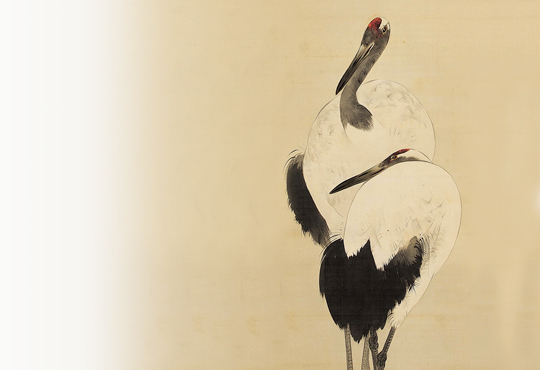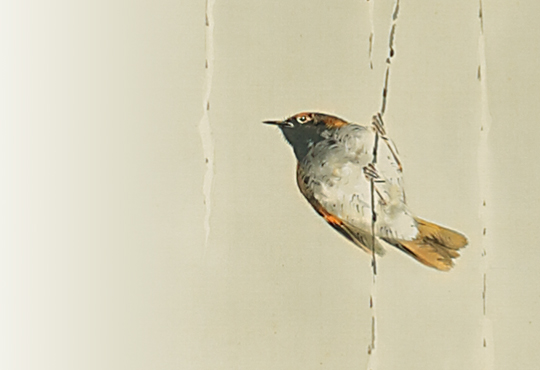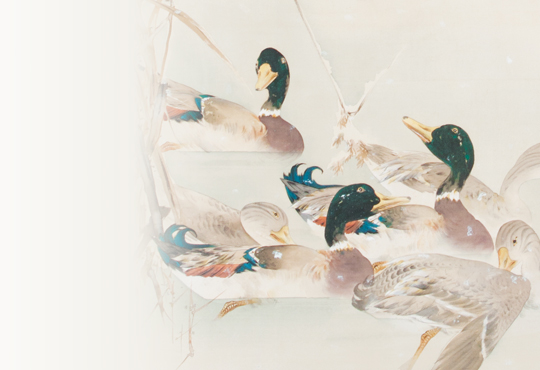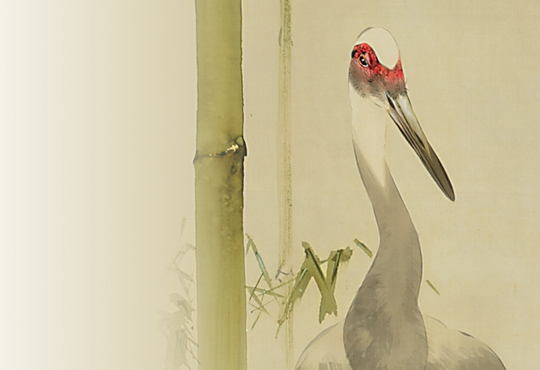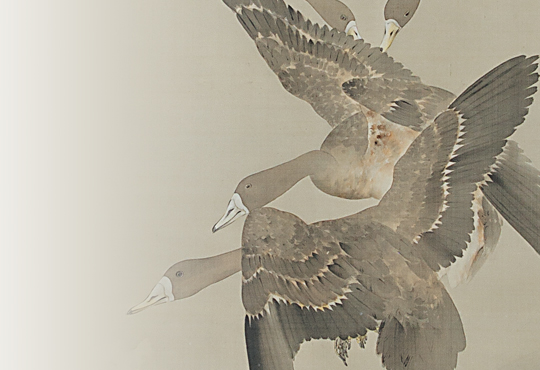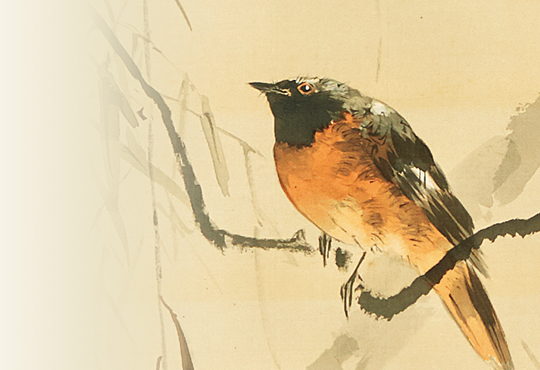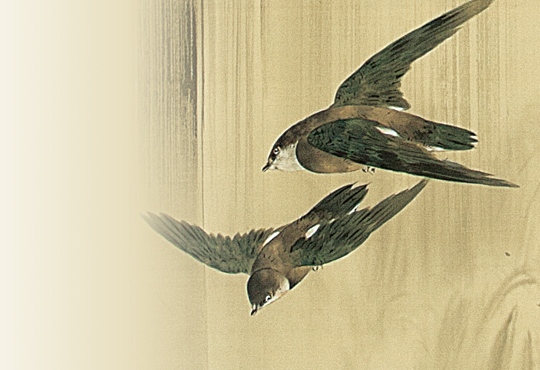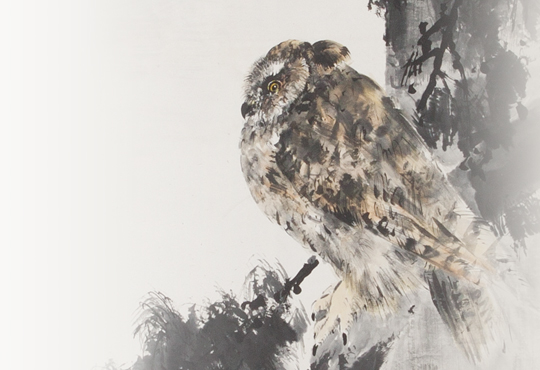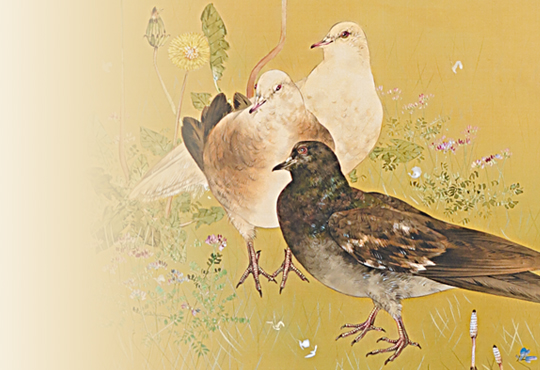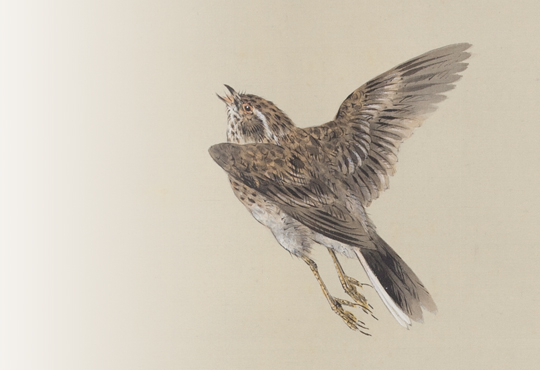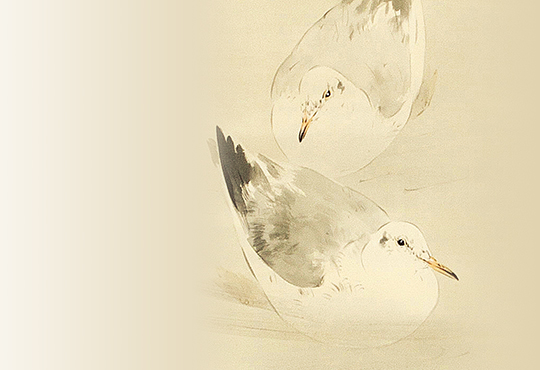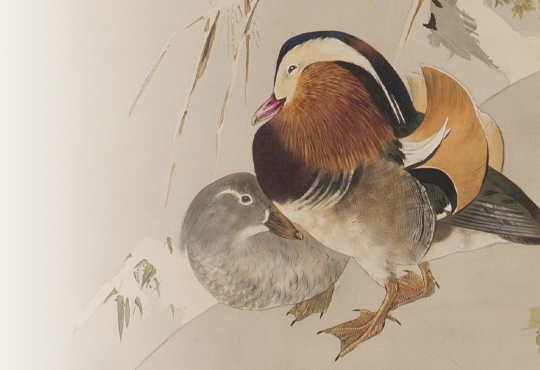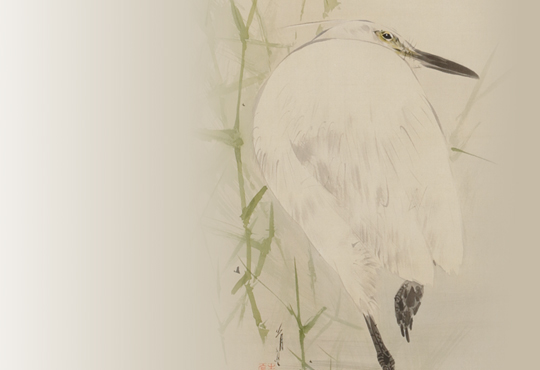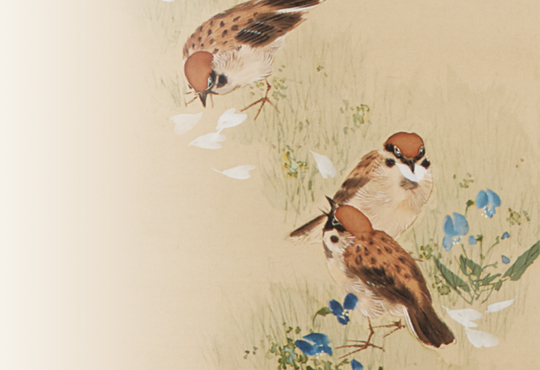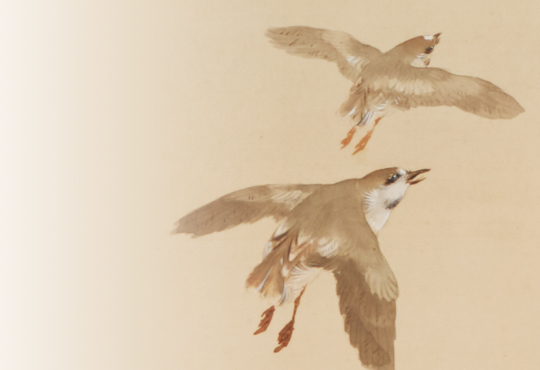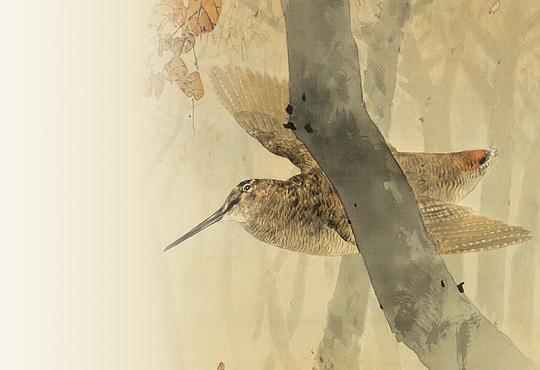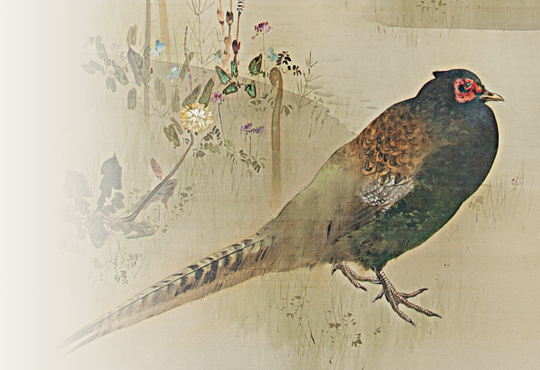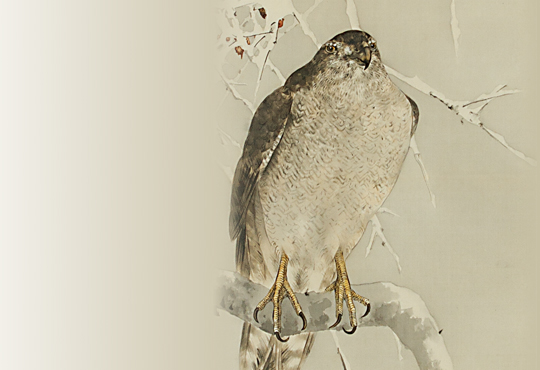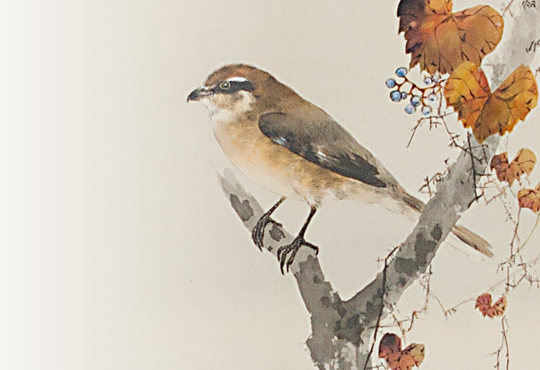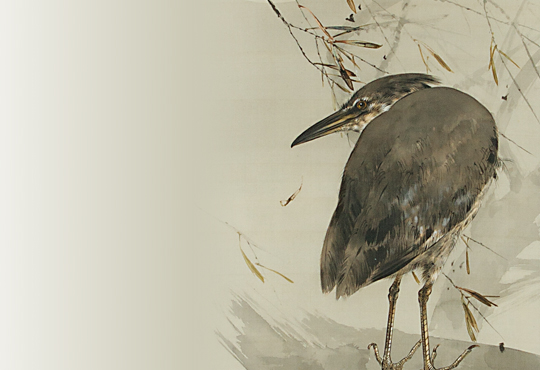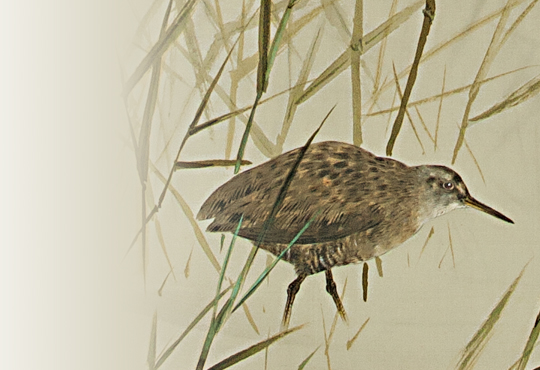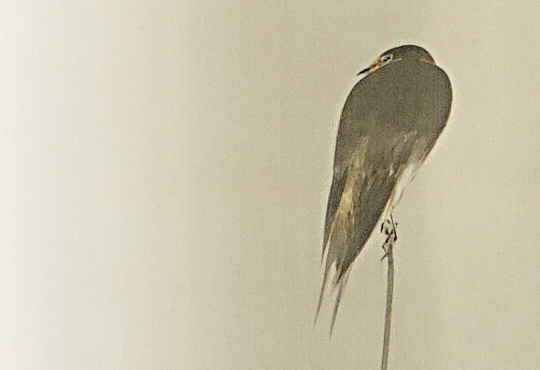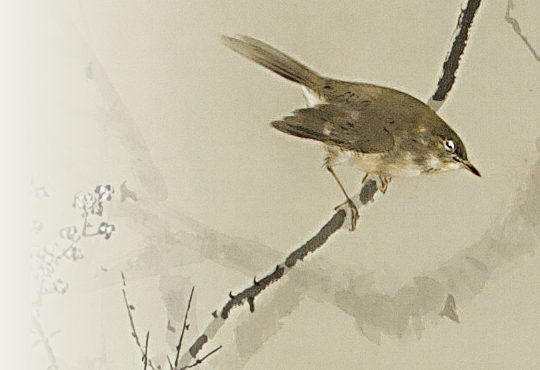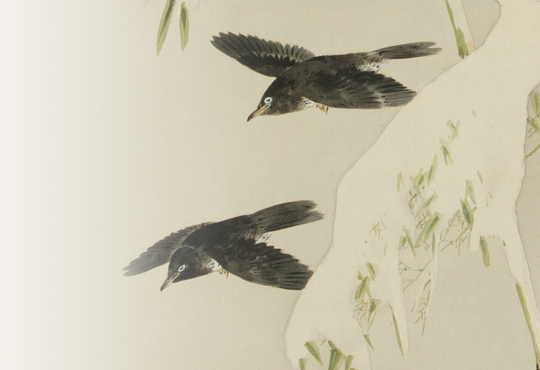vol.18 The Painting that Surpassed the Photograph: The Lesser Cuckoo
Cuckoos (Family: Cuculidae) are widely distributed around the word, with approximately 150 identified specifies. A major, well-known ecological feature they have is called “brood parasitism”- to lay their own eggs in the nests of other birds and have their chicks raised by hosts. In most cases, each species target species is determined genetically and use the strategies that ensue typically cater towards their target’s behavior. Female cuckoos observe the nesting activity of their target very closely. During their target’s egg-laying period, she sneaks into the host nest and switches one host egg with her own. Since these eggs are very similar in size and color pattern to the host’s eggs, most host birds cannot tell them apart. Incubated by the host bird, cuckoo eggs typically hatch before host eggs. Immediately after hatching, the cuckoo chick methodically evicts other chicks by pushing them out of the nest and, in monopolizing the host parent’s care and attention, the chick grows strong and leaves the nest. Upon first glance, this appears highly immoral, however, this behavior arose from evolutionary processes, as a necessary method for survival.
In Japan, there are four main species of cuckoo (the Eurasian cuckoo (Japanese: Cuckoo), the Oriental cuckoo (Tsutsudori), the Lesser cuckoo (Hototogisu) and the Rufous hawk-cuckoo (Juichi), which are known as summer birds that migrate from Southeast Asia. Except from the Rufous hawk-cuckoo, the remaining three are difficult to visually distinguish. On the other hand, the song of each male species is unique, easily identified and, in fact, are also the source of their Japanese names. Like their names, the Eurasian cuckoo cries “cuckoo, cuckoo”, the Rufous hawk-cuckoo (Juichi) sings “juichi, juichi” and the Oriental cuckoo (Tsutsudori) goes “popopopo…”, much like the sounds made when tapping bamboo. (*“Tsutsudori” literally means “Pipe Bird”.) The Lesser cuckoo (Hototogisu) sings “kyokyo, kyokyokyokyo” and its cry is often interpreted as sounding like various Japanese words but, try as I might, I personally don’t hear them. To me, it just sounds like it’s shouting its own name, “hototogisu!”. Male cuckoos are also characterized by their cries. During breeding season, their loud cries can be heard continuously, certainly, during the day as well as in rainfall and even during the nights. The Eurasian cuckoo is relatively easy to observe because they live in open areas, like grasslands and open forests. However, because the remaining three species inhabit deep forests, they are rarely seen. Even so, due to the echoes of their characteristic songs, you will certainly be made aware on where they live. Another feature is their song flight. Whether during the day, in the rain, or at night, these males will fly and sing high in the sky at a high speed. As they are small and fast, these song flights are a rare chance to catch a glimpse of these birds.
Now, let us address how Japanese painters have depicted the cuckoo’s song flight. Often depicted during a moonlit night or at rainfall, Nagasawa Rosetsu’s “Eurasian Cuckoo” (Takatsu Kobunka Kaikan Collection), Kano Shigenobu’s “Deer and Lesser Cuckoo Folding Screen” (Kyushu National Museum Collection) and Utagawa Hiroshige’s large color print “One Hundred Famous Views of Edo. Komagata Hall and Azuma Bridge.” (Ota Memorial Museum Collection) are noted representative works. A rare work would be Katsushika Hokusai’s “Brush-Drawn Paintings: Rainbow and Lesser Cuckoo” (Hokusai Museum Collection), which depicts the bird in flight under a rainbow. In any case, this depiction of the bird is not realistic, but its ecological characteristics are correct.
Similarly, this work depicts the male Lesser cuckoo sings in flight. With the background depicting a cloudy sky, I suspect it must have been rather dark in reality. Perhaps it depicts rain, or the moments right before the moonlight leaks through the thinning clouds. The most remarkable aspect of this work its realism. In particular, the accuracy in this depiction of the Lesser cuckoo’s feather’s color pattern. Due to the similarities of their body’s color patterns, cuckoos are often confused with hawks and falcons. Nonetheless, if you look closely at each feather, they are clearly different. This work articulates the nuances of these similarities and differences (the details of the wing and tail feathers are especially astounding). As such, it’s safe to say that this is the best painting of a cuckoo in flight.
With that being said, the realism of this work surpasses photography. To the world of painting, the invention and popularization of photography was a major historical event that seemed to undermine its significance. Until then, Realism may have been the objective of painting, however, with the advent of photography- the camera’s ability to accurately capture the visual world became a threat, which forced some painters to shift their aim. Following the Impressionists, painters were struggling to find their own, new goals to pursue. Nevertheless, photography has its limitations. Cuckoos, which fly in high, fast, and dark conditions are difficult subjects to capture, even for the latest high-performance camera. On the other hand, while it may well escape the camera’s abilities, with the skill and creativity of the artist, this piece accurately captures the cuckoo. Despite being a bird-and-flower painting from the Meiji period, this piece exemplifies a superior form of Realism that surpasses the abilities of contemporary photography.
Author : Masao Takahashi Ph.D. (Ornithologist)
Dr. Masao Takahashi was born 1982 in Hachinohe (Aomori prefecture) and graduated from Rikkyo University’s Graduate School of Science. Dr. Takahashi specializes in behavioral ecology and the conservation of birds that inhabit farmlands and wet grasslands. Focusing on the relation between birds and art, he has participated in various museum and gallery talks.
